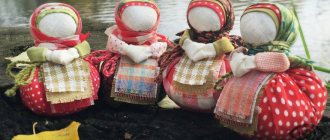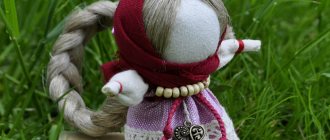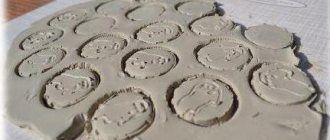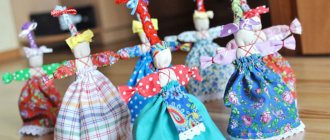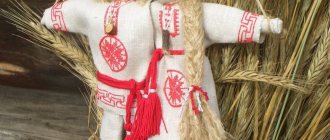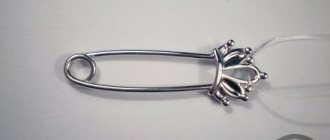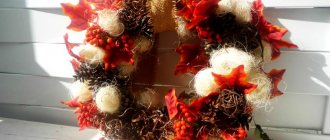For many centuries, our ancestors were accompanied by amulets that protected them from failure, illness, the evil eye and various misfortunes. They were placed in the house and carried with them, they were made before significant events. For modern people, amulets have a purely decorative meaning. However, they can be an excellent symbolic gift or interior decoration. If you are interested in the history of our ancestors, the life and traditions of the Slavs, or you just like to do handicrafts, why not try making Slavic amulets quickly and easily with your own hands? Our step-by-step master class will help you with this, describing all stages of the work.
How the Bird of Joy appeared
The daily life of our ancestors from infancy until death was accompanied by all kinds of amulets. The Slavs made them themselves or asked for help from elders in the family.
Dolls were a popular type of amulets. They were made from whatever came to hand: twigs, straw, scraps of fabric, ribbons and beads. They just didn’t do it out of idleness. To create a rag or straw figurine, you definitely needed a reason.
Eye-catching neighbors, frequent illnesses of the child, scandals at home - all this served as a reason for making a talisman. Such dolls were called oberezhny. But there were others - ritual ones. They were not used every day, being taken out only on holidays. The Bird of Joy belongs specifically to the ritual dolls.
The Slavic symbol bird was associated with spring, and it, in turn, was the personification of joy, love, happiness, a harbinger of change and positive change.
Nothing is known about the period of the appearance of the Bird of Joy, and the name of the doll does not help to solve this mystery at all. The Slavs have always revered spring, loudly and sincerely rejoicing at its arrival. And if she was late, they tried to speed up her arrival. The Joy Bird doll helped them with this.
The Joy Bird was made to hasten the arrival of spring.
There is a widespread theory among experts that the doll could have been born much earlier than its current name. It is very likely that it was previously used under a different name.
Whenever the Bird of Joy appeared, at one fine moment it settled so firmly in the culture of the Slavs that it became an integral part of life.
DIY amulet: making a pot holder in the shape of a rooster and a pattern of buttons
A kitchen oven mitt is a thing that is useful in every home, so this accessory will serve as a universal gift, and the unusual design of this oven mitt will not leave any housewife indifferent!
banner_zagovor_flash
In order to make such a potholder, it is best to use thick woolen fabric. Cut out round-shaped parts from small pieces of fabric (you can see the exact configuration and dimensions of the parts on a special pattern). Your potholder must have wings, a tail, a beak and eyes, only in this case it will resemble a real poultry.
After this, carefully sew the parts together (it is recommended to use a strong and neat machine stitch for this). Next, the potholder is carefully turned right side out and stuffed with some kind of filler (it can be cotton wool or padding polyester). Please note: there should not be too much filler, otherwise the potholder will look sloppy and you will not be able to use it.
The following craft is a great option for children; it will not only protect your home from the evil eye, but will also develop fine motor skills in the child. To create a rooster from buttons, you will need buttons of various colors (it is better to take red, green and blue), a thick sheet of cardboard, and also regular stationery glue. Carefully outline the contours of the future bird on the cardboard with a pencil (use a special stencil for this), and then begin with your child to glue the buttons to the right places (try to ensure that there is no distance between individual buttons). In conclusion, all you have to do is dry the finished painting.
The meaning of the Bird of Joy doll
Often the purpose of making a Slavic doll amulet can be recognized by its name. The Desire doll helps make dreams come true, Pelenashka protects the baby, and Lovebirds protect the happiness of lovers.
The Bird of Joy symbolizes the arrival of warmth, joy and new opportunities.
But the meaning of the Bird of Joy doll cannot be guessed so easily. The appearance of the motanka also does not help solve this mystery. According to the rules, miniature figurines of birds are attached to the doll, and the scarf on her head is tied in a special way - so that it resembles wings. Alas, such symbolism will say nothing to a person who knows little about Slavic traditions.
The secret is that the Slavs associated the return of birds from warm regions with the arrival of spring. When the warm season was delayed, they independently called upon spring with the help of the ritual of turning into birds.
Women tied their scarves in a special way, put on clothes with patterns of birds and went to the fields and forests. There they left the Birds of Joy. In this way, the Slavs tried to outwit spring, showing it that the birds had already arrived and it was time to come.
Based on this, the Bird of Joy will have the following meaning:
- the onset of warmth - nature wakes up from hibernation, the trees turn green, herbs sprout, which can be collected for tinctures or amulets;
- the arrival of joy and fun - after all, now you can walk a lot and for a long time without fear of freezing;
- finding happiness, because spring is the time for lovers;
- fulfillment of desires - the sun, almost invisible in winter, will begin to shine all day long, giving strength and energy that was so lacking during the cold period.
Whatever one may say, Lyalka has exclusively positive meanings. It could not be otherwise, because our ancestors believed that birds bring happiness and good luck on their wings.
Rules for creating a ritual doll
For us, toys are an essential attribute of childhood. Growing up, we say goodbye to our favorite dolls, cars or animals. We give them to the next generation, give them to friends, and sometimes throw them away.
The Slavs had a different attitude towards dolls. In their culture, they performed sacred functions - they protected owners from envious people and evil spirits, and helped conduct seasonal rituals. Each doll had its own external characteristics, but at the same time there were general rules for making such dolls.
What you need to know when making a Bird of Joy doll with your own hands:
- Needles, scissors and other sharp craft supplies are used only at the preparatory stage. You will have to fasten the workpieces without them, using only threads.
- Traditional folk dolls do not impart the characteristics of the owner or his relatives. The facelessness of the figurine prevents dark entities from moving into it and causing trouble.
- Another important point is that the Joy Bird doll must be completed in one sitting. It is believed that stretching the work dissipates the energy put into the amulet, thereby weakening its strength.
- Use only natural materials. The Slavs treated nature with respect. They believed that everything obtained naturally had a powerful, positive charge of energy.
These rules were followed by ancient Slavic women who made dolls for their loved ones. Not only traditions, but also warm wishes were put into amulets, so they made good protectors and real magnets for happiness.
Taking into account all these nuances, you too can make a beautiful and effective amulet.
Master class: Do-it-yourself Bird Joy doll
The Bird of Joy is a ritual doll. It is customary to make it at the beginning of spring, so that the warmth comes as quickly as possible. But the Slavs did this not only in order to quickly replace winter clothes with lighter ones. They also tried to invite happiness to visit.
Rest assured, together with the Bird of Joy, positivity will definitely come to your home.
If you also lack happiness, try making a spring ritual motanka. Spring is a great time for change.
First, let's collect materials:
- straight branch (about 15-20 cm long);
- fabric of any color (1x1.5 m) - we will make a twist from it;
- white chintz (several lengths: 40x50 cm, 35x35 cm, 15x15 cm);
- colored fabric in the shape of a triangle - for a scarf;
- dark fabric for the petticoat (piece of 20x30 cm format);
- bright fabric for the overskirt (the length is slightly larger than the previous one - 30x40);
- a strip of white material for an apron;
- filler for the head and chest (only natural - yarn, herbs);
- red jute thread;
- belt ribbon;
- pieces of colored material (5 pieces 8x8 cm) - for birds;
- wooden stand.
Before you begin the process of creating a reel, read the instructions and make all the blanks in advance. During the assembly process, sharp tools can no longer be used.
We've sorted out the materials, now we can clear everyone out of the room and prepare the work surface. Let's get started!
Step-by-step instruction
- Wrap the largest piece of fabric tightly around the stick, and then secure the fabric with thread.
- We make the head in the form of a ball using filler.
- Attach the head to the body using the same thread.
- We will turn the ends spread out on the sides into hands. Spread them nicely so that there are no folds left, and then form palms using thread.
- Take a chest blank. Having straightened a piece of fabric, place the filler on it so that you can twist the roller. Place the resulting roll under the fabric near your hands, then lower the material and secure the curvy shapes with thread.
- Now you can start working on the skirts. First the bottom one. We apply it with the wrong side in the area of the belt, lifting it up. Having tied the thread in the waist area, lower the skirt down. Repeat this step again using the fabric for the overskirt.
- Let's do the headdress. You will have to spend a little more time on it than on the more familiar scarves for other reels. Fold one side of the scarf triangle inward 3 cm.
- Exactly in the middle of the triangle, fold it in half to form a rhombus. Bend it again and tie the end with thread so that it resembles a bird's beak.
- Add a little filler under the finished beak and tie everything with thread again.
- Place this design on the cradle's head and secure it properly. Leave the two front edges of the fabric on the shoulders and tie it with thread under the neck. Make a ponytail from the third end sticking out from the back. Don't forget to form the headband by attaching a ribbon to the forehead before putting on the headscarf.
- According to tradition, the Bird of Joy was decorated with small figurines of birds. There is already a bird on our reel, but if you want, you can make 3-5 miniature birds and attach them to the doll’s arms and skirt.
- The penultimate detail in winding the ritual doll will be the belt. To make it, take a white piece of canvas (or any other white fabric) and tie it to the belt in the same way that we learned when making a skirt.
Bird Joy should turn out bright, cheerful and joyful. This is the only way it can bring happiness and good luck to its owner.
The Bird of Happiness
The Bird of Happiness is a toy made of wood in the shape of a bird. It is also called the Northern bird, the Arkhangelsk bird, the wood bird or the Pomeranian dove. It is believed that she is a symbol of family happiness and prosperity.
The place of origin of carved wood craft is the territory of the Arkhangelsk province, which in the 20th century included the lands of modern Murmansk and Arkhangelsk regions, some areas of the Republic of Karelia and the Nenets Autonomous Okrug (Pomorie). Historians mentioned in their works that in the 19th century, a wooden bird suspended from the ceiling was a mandatory part of any home. Such toys were made by Pomor residents and Murmansk artisans. Children will be interested in listening to the ancient legend about how the bird of happiness appeared. One frosty winter, about 300 years ago, in a village in the Arkhangelsk province, a little boy was dying of illness. The parents despaired of curing their son, because... no medicines or herbs helped, and doctors and healers were powerless. The boy’s father was “splitting a splinter” when his son asked him: “Dad, when will spring come?” To which the father replied: “When the birds fly, spring will come.” “When the birds fly, then I’ll get better,” said the boy and fell soundly asleep, exhausted by the disease. And then my father had an idea - to carve a bird out of wood. He immediately set to work: he cut out the bird's body and thin wooden feathers, which gathered into lush plumage. It was decided to hang the wondrous bird over the crib of a sick child. Surprisingly, the boy began to recover, daily watching the flight of the lush-feathered bird, looking at the shadows that it cast with its carved wings - nothing less than a miracle! Since then, the bird of happiness has been hung over the cradle: let the baby admire the beautiful pattern, and the bird will protect the baby from troubles and misfortunes with the span of its wings. Russian writer Mikhail Prishvin wrote: “I am in the clean room of a wealthy Pomor. In the middle of it hangs a dove carved from wood and painted blue.” Many times in his works the author focuses his attention on the unusual decoration of the houses of the Pomeranian inhabitants. The Pomeranian Old Believer pigeon is an element of the ethnic and religious beliefs of the Pomeranian peoples. The bird of happiness, as a family amulet, was hung in the red corner of the wooden room, next to the dining table. In the evenings, when the family gathered together for dinner, a large samovar was placed on the table, and from the hot steam the carved bird began to slowly circle around its axis, as if “inspecting its possessions.”
The bird of happiness is made from a solid wooden block or chips (therefore, another name for it is chipped bird); fir, pine, spruce or cedar wood is usually used. To connect parts, no additional materials are used, such as glue, nails or other fasteners. Each feather is cut into a thin petal and bent in a special way. The process of finely separating the layers is the most important and complex operation when creating a bird. The bars are connected to each other, and then the master “unfolds” the feathers of the wings and tail. The feathers are connected to each other by threads. Craftsmen, trying to demonstrate the true beauty of wood, select the texture of the wood layer to match the bird's plumage, highlighting the shape of the body, head and tail. The mythical bird of happiness is not intentionally painted or varnished; it is believed that only a real, living tree has a positive effect on a person. Over time, the wooden bird acquires a bronze tint. Such an unusual toy will fit perfectly into the interior of any modern home; the flight of the bird of happiness will look especially impressive if it is traditionally hung next to a light source. The rays from the lamp will pass through the thin and carved pattern of the wings, creating unusual shadows.
Today, thanks to the Internet and a large amount of educational literature, anyone can try themselves in this ancient craft.
Detailed master classes and a detailed description of the process of making an unusual toy will help you create a real masterpiece with your own hands. The only thing is that processing and sawing wood requires knowledge, dexterity and the ability to use a knife. Therefore, this process should not be trusted to children. You can start this type of creativity no earlier than 7 years old under mandatory adult supervision. But even the smallest family members can paint thin feathers with bright colors. Any paints are suitable for creativity: regular gouache or bright and more durable acrylic paints. Together with your kids, you can try to make a bird of happiness using the origami technique from plain paper and possibly using paper plastic (using corrugation to decorate the wings, tail and crest). Thus, following the instructions and diagrams, children will be able to independently make a beautiful and unusual amulet in the form of a bird of happiness. Such a craft will bring good luck to the house, drive away evil spirits, protect the family from troubles and delight all family members with its appearance. Like the Firebird from Russian fairy tales, the unusual chip bird protects people and helps solve problems.
